Ultrabook Review SONY VAIO T13
I continue my series of articles about ultrabooks. The second is on the way
generation of ultrabooks on new Intel Core processors
third generation, but let's finish the first
wave devices.

The company SONY for a long time did not let out and did not announce ultrabooks, and when
it's time to make your move showed two computers of the T series - with
11.6 and 13.3 inches screen. Recently, I personally brand VAIO
ceased to inspire the holy trembling. What are today's sensations - look under the cut.
The packaging of glossy cardboard is decorated in black and white colors. On
The front side shows a stylish silver laptop, and on the reverse side, a warning about using is written on a black background in small print.
Only original SONY products. Ultrabook fixed inside
between two pressed cardboard inserts, located on the side
box with
charger.
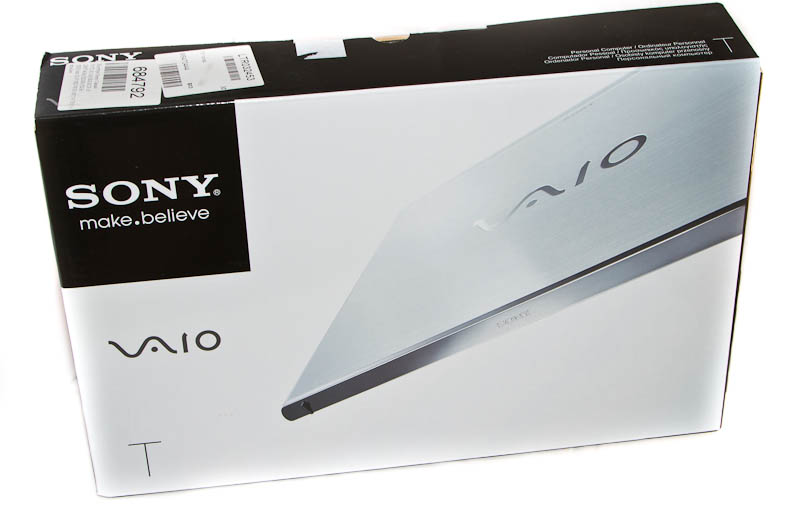
')
The charger is small but worth mentioning again.
that the dimensions of the charge from Samsung and ASUS are significantly smaller and comparable to
Apple The rest of the vendors stubbornly make the weight of the ultrabook memory.
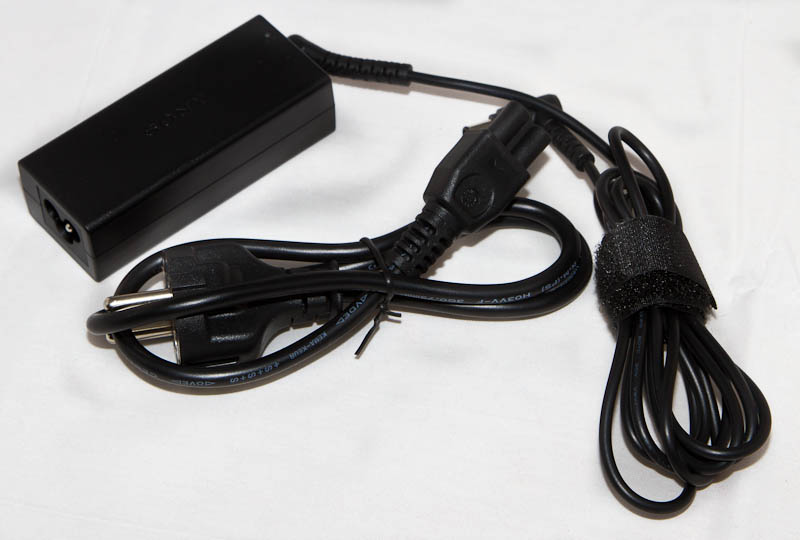
The model that came into my hands has the following configuration:

The Sony SVT-1311M1R ultrabook continues the traditions of the current generation of Sony.
The design is strict, elegant, but in general it is inferior to ASUS Zenbook, Lenovo
U300. The reasons are simple: the other price category and the lack of obvious
the desire of the Japanese company to fight in this market.

To the right of the touchpad under the keyboard, as usual, the gypsy fair. Tutu
multi-colored stickers that spoils the look of any laptop. Transfer
advertising slogans are also amusing: the “sensitive device” will
your good friend and comrade, just don't upset him.
The power button is small and not very comfortable. It is located on the right
screen, next to it is the indicators NumLock, CapsLock and ScrollLock. To the left
there are three buttons - ASSIST, WEB and VAIO. VAIO calls the panel
phyomen software, WEB launches default browser, and ASSIST calls
operating system recovery program.
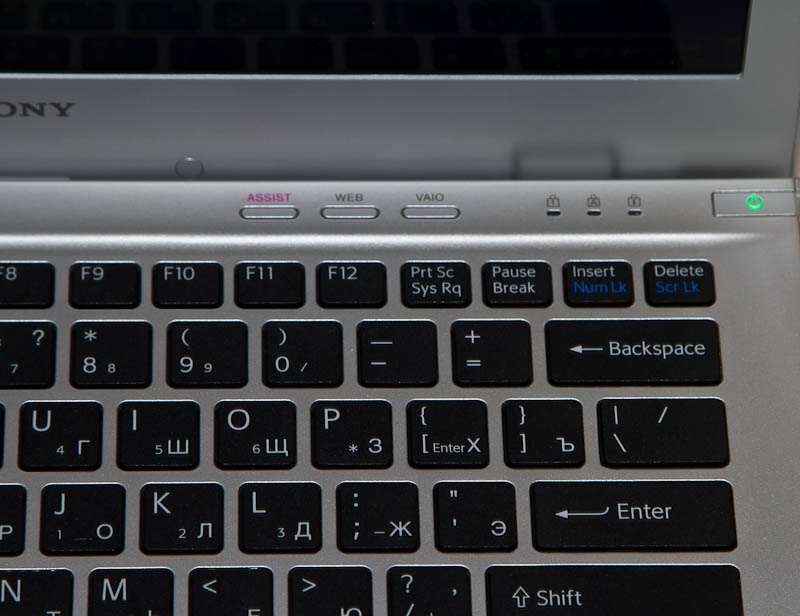
The keyboard consists of 82 separate keys. Russian and English fonts are applied in the same color, and
Additional features are applied in blue paint, which is clearly visible on the buttons ...
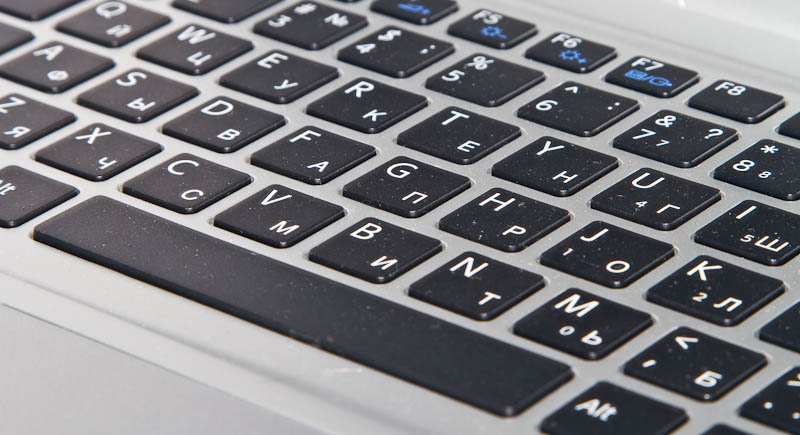
Indicators on the front of the device display battery information
(charging, battery life), hard disk activity and wireless
network.
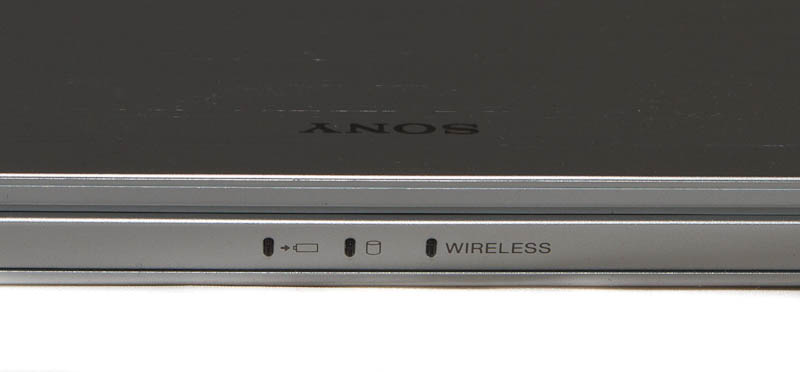
On the side panels are expansion ports. On the left: two
USB ports - 2.0 and 3.0, cooling system grille and connector for
connect the power adapter.

On the right are the audio jack, card reader, HDMI port, VGA connector and Ethernet port.

The location of the ports, as on most ultrabooks, causes
Serious complaints. On the right, where the mouse is usually located
ports are located to which thick cables are connected - VGA, HDMI and
Ethernet On the left, USB ports, although it is clear that you connect a USB flash drive or
notebook mouse more convenient to the right.
On the bottom panel are stickers with information about the ultrabook and
Windows and air intake for the cooling system. SONY - the first ultrabook with a removable battery.

The ultrabook uses the TN + film matrix, which does not allow
boast good viewing angles, but the color and brightness are
at a good level.

Technical stuff SONY T series is as follows: the central processor
Intel Core i3-2367M operates at a frequency of 1.4 GHz. He refers to
family of processors Sandy Bridge, performed on 32-nm process technology.
Because it belongs to the younger series - i3 - in it
there is no support for TurboBoost technology and processor frequency
does not increase above the nominal. Hyperthreading technology
present in full and Intel Core i3-2367M capable
process four data streams simultaneously.



The video subsystem is integrated into the processor and bears the proud name of Intel HD
Graphics 3000. In addition to the actual graphic tasks that perform
core operating at 350 to 1100 MHz, built-in video card
supports Intel Quick Sync technology (for video encoding), Intel
In Tru 3D (for playing 3D movies), Intel Clear Video HD (for
eliminate artifacts when playing video).
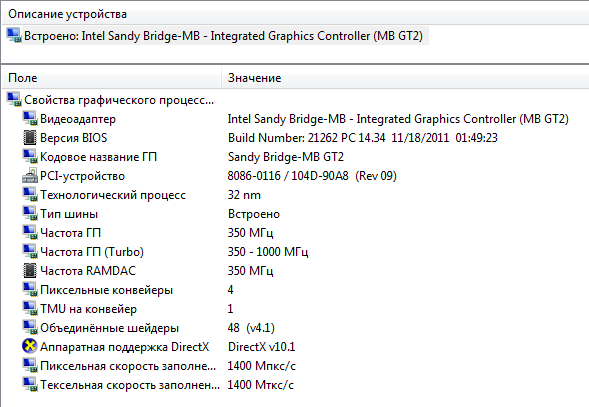
For data storage, a hybrid system is used - HDD + SSD. AT
Hitachi 320 Gb is used as the main disk, and
Called Samsung SSD 32 Gb. They work together thanks to technology
Intel Smart Response.


RAM is soldered to the motherboard, but Sony
offer to install another module if necessary
free slot
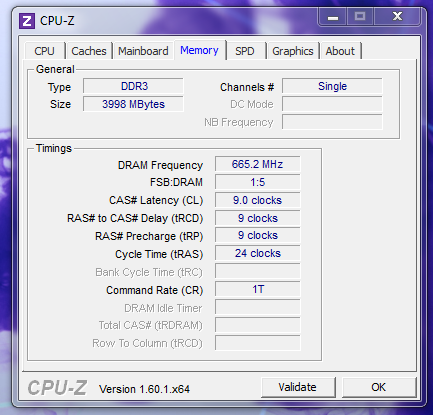
The Windows performance index showed a result of 4.5. For comparison
The previous test subject on the Intel Core i3 processor - Toshiba Z830 - showed 5.2. Why is that? CPU performance received
the same score of 5.2 points. Work with RAM too
the same - at 5.9 on the Microsoft scale. Worker productivity
Windows Aero Desk Backgrounds Sony VAIO T13 Pig
here it is 4.5 points. Toshiba better hard drive - yet
honest SSD versus hybrid system.
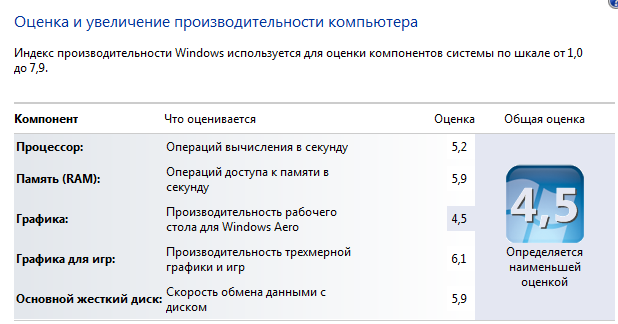
PCMark tests give the following results: 4406 in Vantage and 2160 in PC
Mark 7 - both results are lower than the Toshiba Z830 and certainly lower than
ASUS Zenbook UX31E.
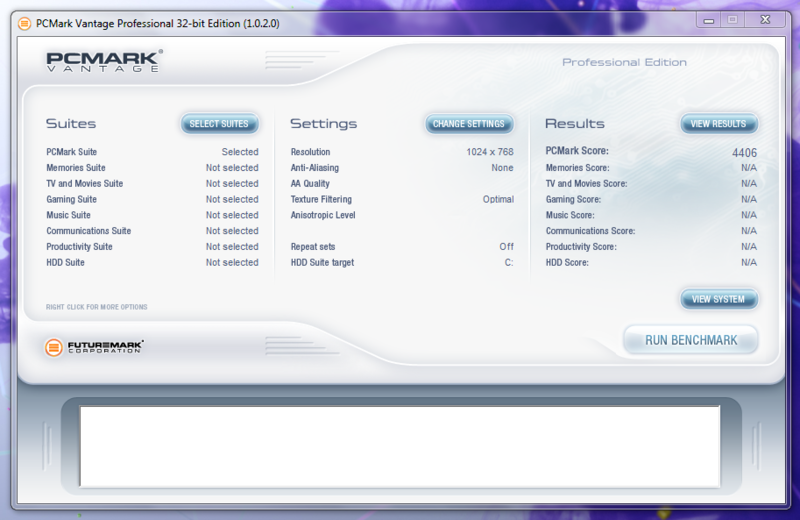

Using a caching SSD helps tighten Crystal Disk Mark performance
to the level of cheap SSD drives. Writing small blocks is not impressive,
but reading at a good level.
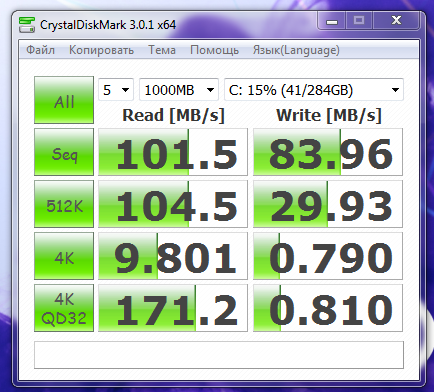
With memory Sony VAIO T13 works poorly, the worst performance of the ultrabooks I tested = (
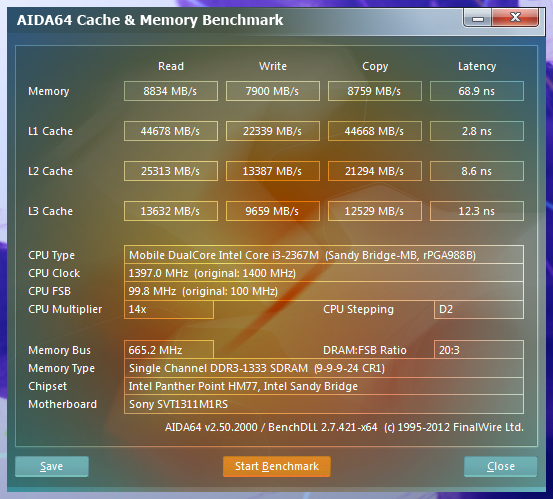
CPU temperature did not rise above 66 degrees, but hurry and
I wouldn’t compliment engineers — yet T13 is thicker
competitors, and therefore there is more room for cooling. Fan sound
when heated is not annoying, I did not hear the whistles and howls.
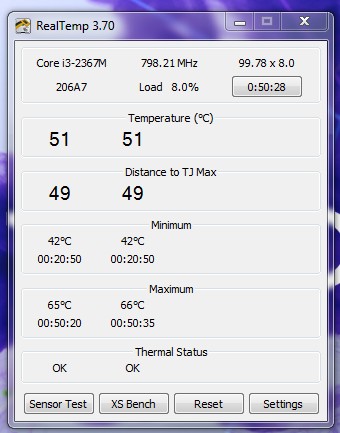
The PowerMark test tells us that in Balanced mode Sony VAIO T13
live 3 hours 25 minutes. Previous subjects in the same test
showed smaller numbers, with the exception of HP Folio 13, which
lasted 4 hours 4 minutes.

Final thoughts.
Sony VAIO T13 is a compromise. Sony couldn't ignore
Intel calls. Therefore, a product was born that is still dopilivat
and finish. There is a beautiful Z-series that could be processed and
put on par with ASUS Zenbook and Lenovo U300. Instead of this
appeared inexpensive, but not high-performance T13. Price can
to become a factor that will attract a buyer - in Yulmart T11 is offered for 26,700 rubles , and T13 - for 27,570 . Even against the backdrop of an inexpensive Acer, this is quite an acceptable price. I don’t see any other advantages, better Toshiba Z830.
generation of ultrabooks on new Intel Core processors
third generation, but let's finish the first
wave devices.

The company SONY for a long time did not let out and did not announce ultrabooks, and when
it's time to make your move showed two computers of the T series - with
11.6 and 13.3 inches screen. Recently, I personally brand VAIO
ceased to inspire the holy trembling. What are today's sensations - look under the cut.
The packaging of glossy cardboard is decorated in black and white colors. On
The front side shows a stylish silver laptop, and on the reverse side, a warning about using is written on a black background in small print.
Only original SONY products. Ultrabook fixed inside
between two pressed cardboard inserts, located on the side
box with
charger.

')
The charger is small but worth mentioning again.
that the dimensions of the charge from Samsung and ASUS are significantly smaller and comparable to
Apple The rest of the vendors stubbornly make the weight of the ultrabook memory.

The model that came into my hands has the following configuration:
| CPU | Intel Core i3 2367M (1.4 GHz), 2 cores, L3 3 MB cache, NT, TDP 17 W |
| Chipset | Intel HM77 Express |
| RAM | 4 GB DDR3 1333 MHz in single channel mode |
| Video card | Intel HD Graphics 3000 core speed dynamically varies from 350 MHz to 1150 MHz |
| Network devices | Wi-Fi 802.11 b / g / n, Bluetooth, Gigabit ethernet |
| Storage System | HDD: Hitachi 320 Gb SATA II + SSD: Samsung SATA III 32 Gb |
| Integrated devices | 1.3 MP webcam, microphone, SDXC / SDHC / SD / MMC card reader |
| Ports for connecting devices | One USB 2.0 port, one USB 3.0 port, one HDMI port, one combo audio jack (headphone and microphone), one gigabit port Ethernet one VGA port, 1 SDXC / SDHC / SD / MMC card reader |
| Display | 13.3 ”, resolution 1366 * 768 |
| Battery | 6-section, Li-Ion, 4400 mAh |
| Weight | 1.53 kg |

The Sony SVT-1311M1R ultrabook continues the traditions of the current generation of Sony.
The design is strict, elegant, but in general it is inferior to ASUS Zenbook, Lenovo
U300. The reasons are simple: the other price category and the lack of obvious
the desire of the Japanese company to fight in this market.

To the right of the touchpad under the keyboard, as usual, the gypsy fair. Tutu
multi-colored stickers that spoils the look of any laptop. Transfer
advertising slogans are also amusing: the “sensitive device” will
your good friend and comrade, just don't upset him.
The power button is small and not very comfortable. It is located on the right
screen, next to it is the indicators NumLock, CapsLock and ScrollLock. To the left
there are three buttons - ASSIST, WEB and VAIO. VAIO calls the panel
phyomen software, WEB launches default browser, and ASSIST calls
operating system recovery program.

The keyboard consists of 82 separate keys. Russian and English fonts are applied in the same color, and
Additional features are applied in blue paint, which is clearly visible on the buttons ...

Indicators on the front of the device display battery information
(charging, battery life), hard disk activity and wireless
network.

On the side panels are expansion ports. On the left: two
USB ports - 2.0 and 3.0, cooling system grille and connector for
connect the power adapter.

On the right are the audio jack, card reader, HDMI port, VGA connector and Ethernet port.

The location of the ports, as on most ultrabooks, causes
Serious complaints. On the right, where the mouse is usually located
ports are located to which thick cables are connected - VGA, HDMI and
Ethernet On the left, USB ports, although it is clear that you connect a USB flash drive or
notebook mouse more convenient to the right.
On the bottom panel are stickers with information about the ultrabook and
Windows and air intake for the cooling system. SONY - the first ultrabook with a removable battery.

The ultrabook uses the TN + film matrix, which does not allow
boast good viewing angles, but the color and brightness are
at a good level.

Technical stuff SONY T series is as follows: the central processor
Intel Core i3-2367M operates at a frequency of 1.4 GHz. He refers to
family of processors Sandy Bridge, performed on 32-nm process technology.
Because it belongs to the younger series - i3 - in it
there is no support for TurboBoost technology and processor frequency
does not increase above the nominal. Hyperthreading technology
present in full and Intel Core i3-2367M capable
process four data streams simultaneously.



The video subsystem is integrated into the processor and bears the proud name of Intel HD
Graphics 3000. In addition to the actual graphic tasks that perform
core operating at 350 to 1100 MHz, built-in video card
supports Intel Quick Sync technology (for video encoding), Intel
In Tru 3D (for playing 3D movies), Intel Clear Video HD (for
eliminate artifacts when playing video).

For data storage, a hybrid system is used - HDD + SSD. AT
Hitachi 320 Gb is used as the main disk, and
Called Samsung SSD 32 Gb. They work together thanks to technology
Intel Smart Response.


RAM is soldered to the motherboard, but Sony
offer to install another module if necessary
free slot

The Windows performance index showed a result of 4.5. For comparison
The previous test subject on the Intel Core i3 processor - Toshiba Z830 - showed 5.2. Why is that? CPU performance received
the same score of 5.2 points. Work with RAM too
the same - at 5.9 on the Microsoft scale. Worker productivity
Windows Aero Desk Backgrounds Sony VAIO T13 Pig
here it is 4.5 points. Toshiba better hard drive - yet
honest SSD versus hybrid system.

PCMark tests give the following results: 4406 in Vantage and 2160 in PC
Mark 7 - both results are lower than the Toshiba Z830 and certainly lower than
ASUS Zenbook UX31E.


Using a caching SSD helps tighten Crystal Disk Mark performance
to the level of cheap SSD drives. Writing small blocks is not impressive,
but reading at a good level.

With memory Sony VAIO T13 works poorly, the worst performance of the ultrabooks I tested = (

CPU temperature did not rise above 66 degrees, but hurry and
I wouldn’t compliment engineers — yet T13 is thicker
competitors, and therefore there is more room for cooling. Fan sound
when heated is not annoying, I did not hear the whistles and howls.

The PowerMark test tells us that in Balanced mode Sony VAIO T13
live 3 hours 25 minutes. Previous subjects in the same test
showed smaller numbers, with the exception of HP Folio 13, which
lasted 4 hours 4 minutes.

Final thoughts.
Sony VAIO T13 is a compromise. Sony couldn't ignore
Intel calls. Therefore, a product was born that is still dopilivat
and finish. There is a beautiful Z-series that could be processed and
put on par with ASUS Zenbook and Lenovo U300. Instead of this
appeared inexpensive, but not high-performance T13. Price can
to become a factor that will attract a buyer - in Yulmart T11 is offered for 26,700 rubles , and T13 - for 27,570 . Even against the backdrop of an inexpensive Acer, this is quite an acceptable price. I don’t see any other advantages, better Toshiba Z830.
Source: https://habr.com/ru/post/147459/
All Articles